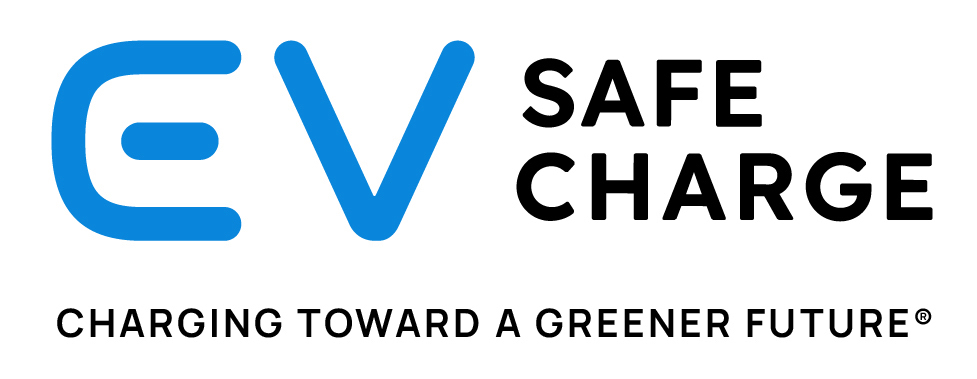Meet Ziggy, the traveling robot that can charge your electric vehicle
Ziggy can save you a parking spot and recharge your car, which will make EVs more feasible in a variety of spaces.

As gas prices surge, electric cars are poised to take over. But there’s a problem: The charging network isn’t ready. Go to California or New Jersey, and you’ll find more than 50 EVs on the road for every one public charging station—about one-fifth the necessary capacity.
We need to build more chargers! But we also need solutions to squeeze in chargers where they might not so easily fit.
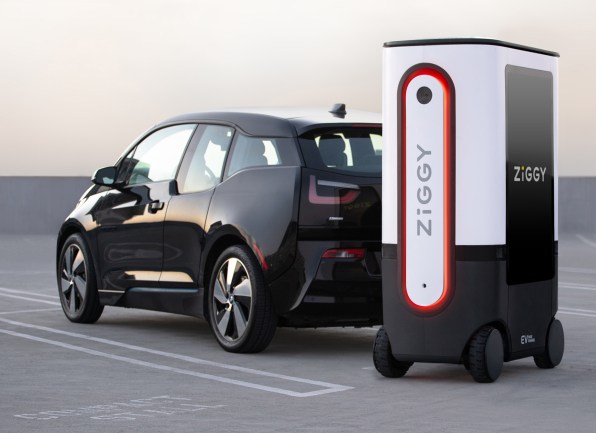
Ziggy is a robot designed to do just that. In development by the startup EV Safe Charge since 2019 (and not slated to ship until late 2023 or early 2024), Ziggy is basically a big battery on wheels that will plug into your car to recharge it. Ziggy will navigate parking garages and lots autonomously, so you’ll be able to book it in an app and it will pull into a numbered parking spot where it waits for you while claiming dibs on your zone. Once you arrive, Ziggy will pull out of the way so you can plug in your car.
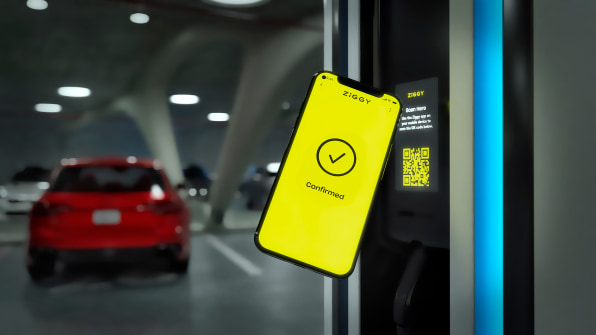
This entire process isn’t just convenient for an EV driver on the go; Ziggy decouples the very notion of a charging station from any singular parking spot. With Ziggy, any bit of open parking can become an EV charging station—or, at least, that’s the plan. Ziggy will be capable of recharging itself autonomously between jobs, but of course a charger would still have to be installed on location to refuel Ziggy. (Its precise battery capacity is still being finalized.)Crafted in conjunction with San Francisco-based design studio Box Clever, which handled the exterior design, branding, and some of the UX, it’s clear the robot is being developed with more intention than its refrigerator-on-wheels form may first reveal. The entire bottom—the black portion of the system—is its battery and drive train, which distributes the weight low to make Ziggy stable, even in wind. The four wheels each have their own motor, allowing the robot to pivot without making wide turns. And while Ziggy is big (its final dimensions are still being tweaked), it will be small enough to squeeze onto a path or even through a doorway.
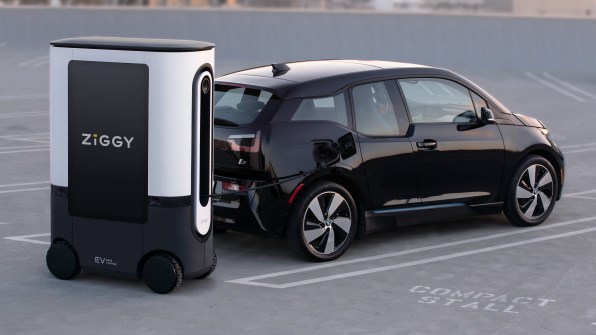
“We did 1:1 scale models in the studio when we started working [on Ziggy]. It was massive! Seven feet tall! Three and a half feet wide!” says Bret Recor, founder of Box Clever. “Then we realized we have to balance battery capacity with size. We can’t have a car charging a car!”
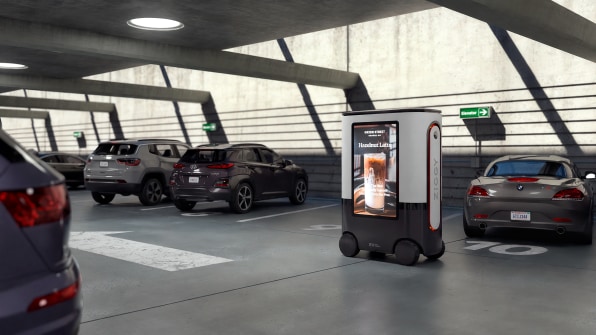
Ziggy’s unmissable screen serves as an advertising platform, yes, but it also glows so that drivers see Ziggy and don’t run it over. The screen doubles as an information kiosk that will show the driver a map of the local garage, along with nearby businesses they may want to peruse while waiting 30 minutes or more to top off their vehicle. To ensure no one hogs Ziggy for too long, the system will bill based on time (much like some Tesla Superchargers do).
What about when Ziggy isn’t in use? “There are other things we’re working on where it might do more to help the garage,” Recor says. “It moves and has cameras, so you can imagine there are a lot of things it can do.”
I imagine that to mean Ziggy could be enlisted as a meter maid or security robot of sorts, patrolling a garage or street autonomously. For now, however, that vision is a ways off, as the Ziggy prototype of today is still operated through a remote control. Developing the autonomous driving system will take time, and navigating parking lots alone is the sort of challenge that Waymo and Tesla have taken years to tackle, and is still not entirely solved.
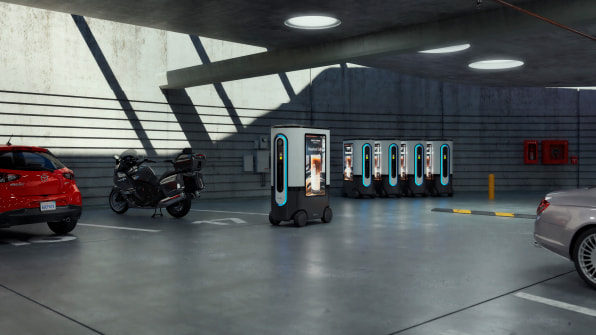
But Recor likens Ziggy more to delivery robots like we’ve seen from Postmates than self-driving cars. “It’s not flying around at risk of hitting people. It’s not a car driving at high speed. It’s going to roll at less than walking speed,” Recor says. “It’s more like a security robot that will stop [if you get in the way].”
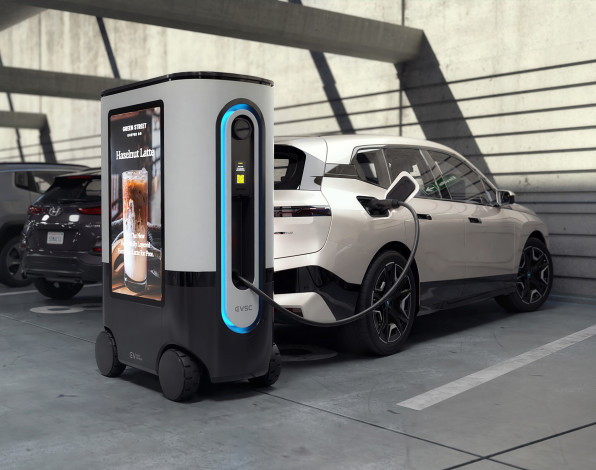
Our comfort and security around Ziggy is paramount, especially since EV Safe Charge plans for Ziggys to invade just about anywhere. While the launch model imagines that the owner of a building or parking lot will lease a Ziggy for their operations (all maintenance can be handled by EV Safe Charge that way), Ziggy is being designed so that dozens can be charged, drive themselves onto a truck, and dropped off at major gatherings like sporting events. In this sense, Ziggy will be distributed much like a bike share, which could make any chunk of urban infrastructure EV-ready without ripping up concrete and spending countless dollars on retrofits.
Ziggy is an invigorating idea. And yet the entire logistics involved in creating, launching, and distributing Ziggy is also a reminder: Even while new electric cars hold benefits over gas-powered ones, the very notion of a car is still at odds with both our environment and infrastructure. Ziggy may do a lot to alleviate the pain of driving electric, but we need to be cautious that such enticing solutions don’t simply deter us from taking a train, bus, or bike instead.
